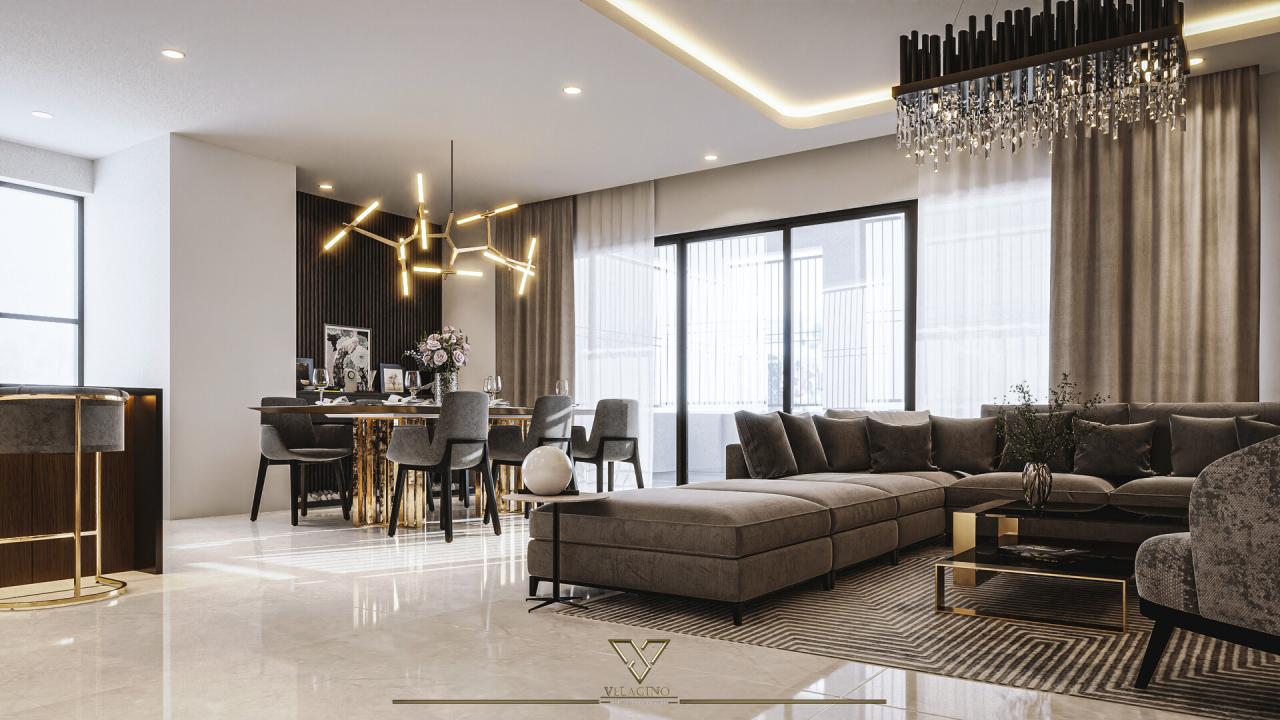Blender Interior Design: Revolutionizing Your Home Spaces

Embark on a journey into the world of blender interior design, where creativity and innovation converge to transform living spaces. From creating stunning 3D models to mastering rendering techniques, Blender offers a plethora of tools for interior designers to bring their visions to life.
Dive in to discover how this powerful software can elevate your design projects to new heights.
Introduction to Blender Interior Design

Blender is a powerful 3D modeling software that plays a crucial role in interior design projects. It allows designers to create realistic visualizations of spaces, experiment with different layouts, materials, and lighting, and present their ideas to clients in a captivating way.
There are several benefits to using Blender for interior design. Firstly, it provides a cost-effective solution compared to traditional methods of creating physical prototypes or hiring professional photographers for visualization. Secondly, Blender offers a wide range of tools and features that enable designers to bring their concepts to life with precision and detail.
Enhancing Visualization Process with Blender
- Blender allows interior designers to create 3D models of rooms, furniture, and decor elements, providing a realistic representation of the final design.
- The software enables designers to experiment with different color schemes, textures, and lighting conditions to achieve the desired ambiance and mood for the space.
- With Blender, designers can easily make changes to the design, view it from different angles, and present multiple options to clients for feedback and approval.
- Moreover, Blender supports the integration of virtual reality (VR) and augmented reality (AR) technologies, allowing designers and clients to experience the design in a more immersive way before implementation.
Creating 3D Models in Blender for Interior Design

Creating 3D models in Blender for interior design projects can be a rewarding and creative process. Whether you are designing a living room, kitchen, or entire house, Blender offers powerful tools to bring your ideas to life in a virtual space.To start creating basic 3D models in Blender for interior design, follow these steps:
Step-by-Step Guide to Creating Basic 3D Models
- Begin by adding a cube to the scene by pressing Shift + A and selecting Mesh > Cube from the menu.
- Use the Scale, Rotate, and Move tools to shape the cube into the desired object, such as a table, chair, or cabinet.
- Experiment with extruding, beveling, and other modeling techniques to add details and refine the shape of your model.
- Repeat the process to create additional objects for your interior scene, adjusting their placement and size as needed.
Customizing Textures and Materials
When customizing textures and materials for interior design elements in Blender, consider the following tips:
- Use the UV Mapping tool to apply textures accurately to your 3D models, ensuring a realistic look.
- Experiment with different shaders and material properties to achieve the desired finish for surfaces like wood, metal, or fabric.
- Adjust the lighting in your scene to see how materials react to different light sources and create a more dynamic and realistic environment.
Using Lighting in Blender for Realistic Interior Scenes
Creating realistic interior scenes in Blender involves mastering the use of lighting. Here are some tips to help you:
- Experiment with different types of light sources, such as spotlights, area lights, and ambient lighting, to create the desired mood and atmosphere.
- Adjust the intensity, color, and position of lights to highlight key elements in your interior design and create shadows for added depth.
- Consider using HDR images for realistic lighting effects that mimic natural light and reflections in your scene.
Interior Design Workflow in Blender

Creating interior design projects in Blender requires an efficient workflow to ensure a smooth process from start to finish. By following best practices and utilizing plugins and addons, designers can streamline their workflow and enhance productivity.
Organizing Assets and Scenes in Blender
Proper organization of assets and scenes is crucial for maintaining a structured workflow in Blender for interior design projects. Here are some best practices to consider:
- Use descriptive names for objects, materials, and textures to easily identify them within the project.
- Create separate collections or layers for different elements of the design, such as furniture, lighting, and textures.
- Utilize the Artikelr panel to manage and organize objects efficiently.
- Group related objects together using parent-child relationships to maintain hierarchy.
Using Plugins and Addons in Blender
Plugins and addons can significantly enhance the interior design process in Blender by providing additional tools and functionalities. Here are some popular plugins and addons used by designers:
- Archipack:A toolset for architectural visualization that includes parametric objects like walls, windows, and doors.
- Hard Ops:A modeling addon that offers advanced tools for creating complex shapes and designs.
- Asset Management:Helps organize and manage assets, textures, and materials within Blender.
- Material Libraries:Provides a library of pre-made materials for quick application to objects in the scene.
Final Thoughts
In conclusion, Blender interior design opens up a realm of possibilities for designers looking to craft immersive and visually captivating spaces. With its versatile features and advanced capabilities, Blender serves as a game-changer in the realm of interior design, empowering creatives to unleash their full potential.
Embrace the future of design with Blender and watch your ideas come to life in breathtaking detail.
Popular Questions
How can Blender enhance the visualization process for interior designers?
Blender provides a robust set of tools for creating realistic 3D models, textures, and lighting, allowing designers to visualize their concepts with precision and detail.
What are the benefits of using Blender for interior design projects?
Blender offers flexibility, powerful rendering capabilities, and a supportive community, making it an ideal choice for interior designers seeking to bring their ideas to life.
How can one create basic 3D models in Blender?
Creating 3D models in Blender involves learning the basics of modeling, such as manipulating vertices, edges, and faces to craft shapes and structures within the software.
What is UV unwrapping in Blender?
UV unwrapping is the process of flattening a 3D model's surface into 2D space to apply textures accurately, ensuring a seamless visual representation in the final render.
How can plugins and addons streamline the interior design process in Blender?
Plugins and addons in Blender can automate repetitive tasks, enhance workflow efficiency, and introduce new features that cater to specific design needs, ultimately speeding up the design process.

